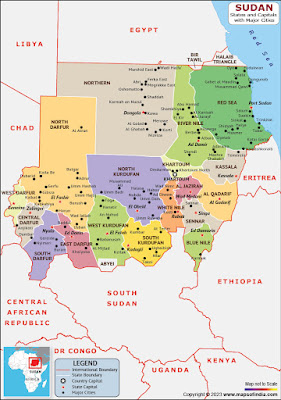Sudan, often overshadowed by its neighbors, is a land of golden deserts, ancient pyramids, and a resilient culture rooted along the life-giving Nile. For those who look beyond headlines, Sudan offers a journey into Africa’s hidden heart, where history whispers from the sands.
A Cradle of Ancient Civilizations
🏺 The Pyramids of Meroë: Sudan has more pyramids than Egypt, with over 200 scattered across the sands of Meroë, remnants of the Kingdom of Kush, standing elegantly under the vast African sky.
🌊 The Nile: Flowing from south to north, the Nile is Sudan’s lifeline, with villages and palm groves along its banks, offering serene boat rides and glimpses into authentic daily life.
🏛️ Nubian Heritage: The Nubia region preserves a rich culture, with mud-brick homes painted in vibrant colors and warm hospitality.
🏯 Temples and Ruins: Sites like Naqa and Musawwarat es-Sufra reveal carvings and temples reflecting deep connections with Egypt and Sub-Saharan Africa.
Sudanese Culture: Warmth and Simplicity
✨ Hospitality: Tea, coffee, and shared meals are central to Sudanese life.
✨ Traditional Music: Drums and the oud add rhythm to community gatherings.
✨ Colorful Attire: Women wear thobe, a flowing garment symbolizing Sudanese grace.
✨ Tea Culture: Spiced tea with ginger and cloves is shared generously.
Sudanese Cuisine: Earthy and Flavorful
🍲 Ful Medames: Stewed fava beans with bread and eggs, a daily staple.
🍞 Kisra: Sorghum flatbread, served with stews.
🥘 Tagalia: A thick meat stew enjoyed with kisra.
🍵 Spiced Tea & Coffee: Essential to social interactions and hospitality.
Why Keep Sudan on Your Future Travel List?
✅ Uncrowded Ancient Sites: Meroë’s pyramids offer peaceful exploration.
✅ Nile Adventures: Experience river life in its authentic form.
✅ Desert Exploration: The Nubian Desert offers quiet beauty.
✅ Warm, Authentic Culture: Experience genuine connections with Sudanese locals.
✅ Photographer’s Paradise: Golden deserts, vibrant attire, and timeless ruins.
Practical Travel Tips
🛂 Travel Advisory: Always check updated travel advisories before planning your visit.
🗣️ Language: Arabic is official; some English is understood.
🌤️ Best Time to Visit: November to February.
👗 Respectful Dress: Modest clothing is essential, particularly in rural areas.
Final Thoughts 🌍✨
Sudan is a land of hidden treasures and quiet resilience, where the Nile continues its timeless journey, and the whispers of ancient Nubian kings dance with the desert winds.
If you are drawn to authentic history, uncrowded heritage sites, and human connection, keep Sudan on your travel list for the future.
✈️ Curious about Africa’s 54 unique countries?
Explore them all on our Africa Main Page here.
🏠 For more art, travel, and culture posts, visit our CRA ARTS Main Page.
Have you heard of Sudan’s pyramids before? Would you like to explore the Nile’s quiet beauty one day? Share your thoughts in the comments below!

Comments
Post a Comment